How to Build, Measure, and Scale Your Multifamily Marketing Approach
When most real estate developments begin to create their multifamily marketing strategy to attract marketing-qualified leads, you can imagine that the conversations are more or less the same each time.
Namely discussions on ad buys, billboards, large banners, and sales calls. These methodologies are often inefficient, having little ROI and little reach in meeting business goals.
A key reason these methods are inefficient is that multifamily marketing has changed.

For many years, marketing was based on interruption through things like cold calls and advertising. But as society became more digital — from the VHS and DVR allowing people to fast forward to programs like AdBlock preventing ads from displaying on websites — these methods have become inefficient.
Technology has empowered consumers to take the buyer’s journey online; therefore, your multifamily marketing efforts should be online too.
How is multifamily marketing evolving?
The better question is, how are residents evolving? Whether you like it or not, millennials (and now Gen Z renters) comprise a sizable chunk of the multifamily market.
Millennials rent longer and by choice, and their lifestyles are vastly different than generations before. Trends like pet ownership and hyper-connectivity define this generation, along with a willingness to sacrifice square footage for prime locations.
And yet, while these lifestyle trends drive development, they’re only a starting point for multifamily marketing.
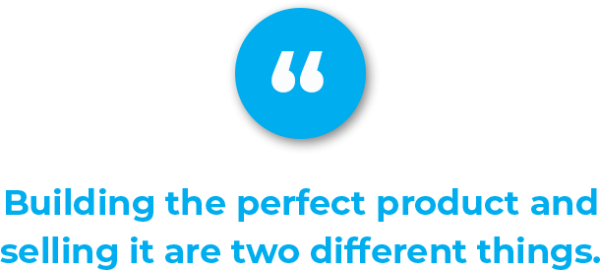
Here are a few secret keys to attracting and converting web visitors into marketing-qualified leads for your multifamily business:
1. Giving every property or organization a custom approach.
Development and the creative process should cater to the audience — not the other way around.
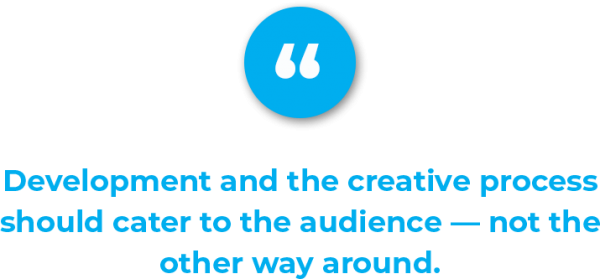
Let’s start by really understanding the target demographic for your property or organization. Immerse yourself in understanding their lifestyle, pain points, and interests. Bring in a multifamily branding agency that can help you turn insights into a concept that will remain top of mind throughout the development process, from contractors to vendors, from building to multifamily branding.
Customizing your apartment marketing approach is essential in today’s world. Marketing strategies vary per market because each market is remarkably different. It would be ignorant to believe that Lincoln, Nebraska residents want the same things as residents in Charlotte, N.C, for example.

2. Creating a narrative and telling your multifamily brand story.
With an earnest understanding of your target audience, a narrative about your residents should unfold. Their motivations, lifestyle choices, and demographic characteristics should come together as a story. From these insights, the concept for your property will be born.
Focus on building something that inspires the people living there. Watch a car commercial, and you’ll see how well the auto industry understands this concept of storytelling. It’s not so much about the product as the lifestyle it promotes.
This aspirational lifestyle affects every facet of multifamily development — from site selection to design and multifamily branding.
When it comes to differentiating your property, it starts with knowing your audience better than they know themselves. Only through thoughtful research can you begin to develop the environment, the lifestyle, and the creative messaging that resonates (and ultimately generates marketing-qualified leads).

3. Building your digital marketing funnel.
What’s the first thing you do when you’re looking to buy something? Odds are, you do some research on Google first. This is where apartment marketing begins in the modern age. As everything moves online, the internet has become the source of major information exchange.
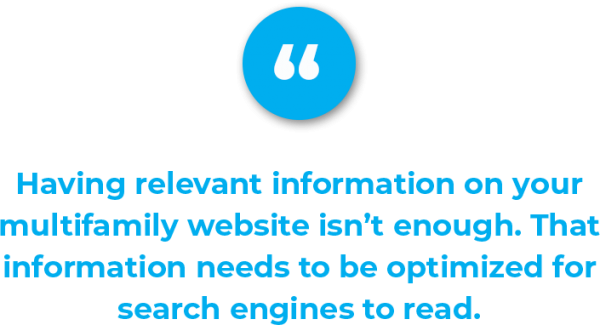
What keywords should you be using? Well, imagine what your typical buyer is searching for. If you’re looking to attract people to your blog about real estate developments in Dallas, you shouldn’t mention attractions in Chicago. From there, the information needs to be broad enough and address the buyer persona’s problem in a way that drives interest.
The information should exist as a content offer and will be “gated” so that the visitor will complete the relevant information to download it. That information turns the visitor into an apartment lead.
These apartment leads might then consume more relevant information and provide more sales information to become marketing-qualified leads, and so on. This is called building the multifamily marketing funnel, and this funnel ensures that leads are qualified before reaching sales. This methodology also sees apartment leads being pulled in to ask questions and do research rather than pushed and bombarded by unwanted advertising messages.
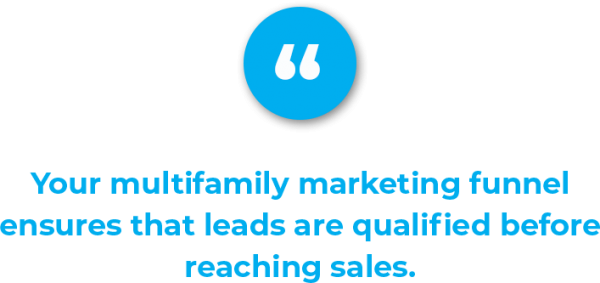
Why is this significant? Because not only are you spending less on obtaining these types of leads, but these marketing-qualified leads are more likely to convert, minimizing your overall ROI.
4. Tracking how you are featured online.
You need to build the funnel to be successful with your apartment marketing to ultimately generate more marketing-qualified leads. The next issue is making sure that you’re presenting this information well. As we stated before, it’s not enough to exist online. Your presence needs to be in tip-top shape!
Why, you ask? Because first impressions are important on the web. People will leave your site within 5 seconds if they cannot find the information they want. So how do you make sure you’re relevant?

Keywords
Ensure you’re using accurate multifamily SEO keywords that your customer will search. You want to feature these regularly enough that search engines will map your content but not so much that they’ll dock you for keyword stuffing.
Focused Content
Staying relevant with your content — including linking to other trusted sites and keeping your information objective — is key to keeping consumers on your site. When a consumer feels like they’ve stepped into an infomercial on your homepage, they’re likely to leave. However, if you keep your content focused and informative, from blogs to social media posts, consumers will more likely see you as an authority and keep coming back.
UX Multifamily Web Design
People are tempted to go with style over substance in multifamily web design. Contrary to what your boss might believe, multifamily websites should always be designed for the consumer and with their interests in mind. What does that mean? The consumer doesn’t want to hear about you. They want to hear about how you’re going to solve their problem.
Keeping your content and multifamily web design consumer-friendly makes consumers more likely to stay on the site. This includes making the site ADA-compliant for your user too. Mobile-friendly designs are here to stay, so make sure your site cooperates.
The Future of Multifamily Marketing
With these aspects implemented, you can expect an improved search presence and a lead ROI that can deliver substantial returns.
This is the future of multifamily marketing. Rather, this is the roadmap for building brands in today’s world to bring in more marketing-qualified leads, and this industry has finally got its hands on it.

Most apartment marketing professionals have a complicated relationship with email marketing. Receivers are continually overwhelmed by their overflowing inbox while senders are frustrated by the lack of responses. Truth be told, it is hard to avoid the spam folder these days.
That said, email marketing is still the most effective way to reach and nurture apartment leads.
According to Marketing Sherpa, email is the preferred source of business communication for 72% of consumers. Whether you are nurturing apartment leads through promotions, interests, or top-of-the-mind contact, email is the way to go.
So, how can you make sure you send a really stellar email? What is the secret to getting your email opened, and — more importantly — read?

As you develop a lead nurturing strategy, there are key components to remember:
1. Define the goals of your apartment marketing outreach.
Who is your target audience? Why are you reaching out to them? The goal here should be to send clear and well-defined messages to a specific audience. Figuring out who they are and where their interests lie is the key to understanding which type of nurturing strategy to implement.
Additionally, it is just as important to define the reason for your outreach. Are you looking to generate some foot traffic and tours at your property with leasing specials? Or, perhaps you are seeking new residents who have toured but have not committed yet.
These scenarios entail two different kinds of apartment leads and each requires its own form of nurturing. The commonality is the overall approach. You want to send targeted offers and content-specific emails to engage on a personal level.
2. Make your email marketing personal.
Sending frequent automated emails can irritate your recipients. Not to mention you will find yourself in the spam folder faster than you hit send. Adding personal touches to your emails guarantees a higher success rate.
According to Experian, brands that personalize their email subject lines experience 27% higher unique click rates and 11% higher click-to-open rates.

Implementing a practice as simple as using your apartment lead’s name in the greeting makes a big difference. By tailoring your emails to a prospect’s interests, actions, and behaviors, you are sending recipients something that they will want to read.
This is especially important in the commercial real estate or multifamily space. Personalized apartment marketing allows you to keep returning clients in the loop while simultaneously reaching out to new prospects.

3. Send emails with valuable apartment marketing content.
One surefire way to pique a lead’s interest is to saturate your emails with information that they want to know. Send content that is relevant and valuable to your apartment leads. For example, share helpful apartment hacks or storage tips with prospects and share fun events and leasing specials with your prospects.
Focus on your lead’s problem point and position your property as the solution. The key to providing educational content is to focus on one topic per email. This gives your recipients a specific course of action to follow. Multifamily properties, for example, can use this nurturing strategy by sending emails that educate prospects on the neighborhood or highlight unique amenities.
4. Connect with your apartment leads on multiple platforms.
Engaging with residents on various types of media keeps you actively present and part of their daily lives. Connecting beyond the initial email exchange is a great way to keep in touch and achieve top-of-mind awareness.
Some digital ways to engage with apartment leads include:
- Invite them to subscribe to your blog
- Connect on LinkedIn
- Share links to your company’s social media pages
- Encourage prospects to share your email or social media content
Engage Your Apartment Leads to Grow Your Property
Getting the lead is important. But it is what you do with your apartment leads that really counts. Nurturing your prospect through email marketing is the best way to connect with a lead and turn it into a lease. Integrating these tips into your apartment marketing strategy will further engage your apartment leads and grow your property.
Gone are the days of a “set-it and forget-it” website. To truly engage your audience you need to know how to write a blog that speaks to them. Business blogging is not just a trendy thing to do, it actually is good for your bottom line.

Consider the following statistics:
- 81% of consumers trust advice and information that they read in blogs.
- Nearly 96% of bloggers promote their service business blog posts via social media.
- 57% of marketers say they’ve gained customers specifically through business blogging.
- Companies who blog receive 97% more links to their website.
- Using images in blog posts gets 94% more views.
In a world where digital consumption is king, there is only one way to fight the battle against your competitors — business blogging and distributing your content for all the world to see.

Below, our experienced team of content writers at our multifamily branding agency compiled all of our best business blogging tips for writing and distributing a service business blog.
1. Select your platform
Prior to starting your blog, you must first decide which business blogging platform you would like to use. Some free options include WordPress, Blogger, and Tumblr. However, if you do not care for any of these, you can always search for other business blogging platforms via Google. If you are a business, you should consider hosting a blog within your website in addition to an outside blog site. Through your external blog, you can create inbound links that drive traffic to your company’s website and in turn, means free advertising!

2. Decide on a web design theme
The next is choosing a web design theme for your business blog. Some bloggers like to talk about the industry, others focus on common problems that clients have. One great way to write about solutions to the problems that your customers have is to predict the questions your prospects are Googling.
If you already have your buyer persona built, predicting your customer’s questions and pain points will be a cinch! If not, refer back to some of our previous blogs for simple steps on how to accomplish this.
3. Pick your design template
Now that you have your theme, it’s time to think about the layout and color scheme of your website. Do you want it to be clean? Simple? Elegant? Fun? Creative? Whatever you choose keep your readers in mind, and make sure that there is a synergy between your design and web theme.
If you operate in the multifamily industry and want a beautiful, affordable, and easy-to-implement web theme, be sure to check out our sister company Swifty!

4. Create a content calendar
Once all of this preparation is complete, it’s time to create an editorial calendar. You’ll want to begin by mapping out at least 3 to 6 months at a time. Then, make notes on the calendar for each day you want to post content.
Most importantly, stick to the calendar! Make sure that you create an editorial calendar that is reasonable for your schedule. Do not overwhelm yourself — it will be hard to stick to your goals if you over-commit and in turn will discourage you from writing future content.
However, you should challenge yourself — don’t schedule just one service business blog a month. Once you get into the groove, you will see that you can post more often and the boost in SEO, engagement, and traffic will make it worthwhile.

That being said, your business will struggle if you don’t have a system in place to attract the right kind of audience with the right content at the right time. Your goal is to nurture and convert your audience, not drive them away because you are shelling out the wrong content (and too much of it).
So press pause before pumping out eight articles a day without defining your business goals first. Create a content strategy that will attract your buyer persona and improve their experience.

5. Write away!
Finally, now that you’ve established your blog site, designed your theme and layout, and developed a content calendar, it’s time to put your fingers to the keyboard and write your first business blog.
At first, keep it simple. If you’re not sure how to get started, read through a few established competitor blog sites. Get a feel for the voice you want your service business blog to have.
Research your customers’ pain points and choose topics that will answer their most pertinent questions. Try to keep in mind what your customers are searching for online so that you can position your organization as a trusted resource.
The length of your blog will depend on your buyer persona and their interests, but we typically recommend a blog post length of at least 1,200 words to get the most out of your SEO strategy. The key for your business is to research your persona and conduct interviews to learn what type and length of content are most valuable.
Interested in more tips for creating a highly optimized blog for your business’ SEO? Check out this blog for step-by-step business blogging tips!

How to Distribute Your Blog Content to Reach the Right Audience
Many of our clients ask us about the importance of content marketing and whether they should consider starting a service business blog. Our answer is always a resounding yes.
Not only is consistent content marketing integral for SEO and achieving a higher search ranking, but it’s also a great way to position your business as an expert resource to customers.
However, distributing content is more important than writing content. In fact, promoting a blog can often take more time than writing the actual content. This is particularly true for businesses that do not have a corporate team of writers and marketers on hand.
To make the blog worth the time and effort of your team, it’s critical to distribute the content effectively and obtain as much use from the blog as possible. For example, a single blog post can be shared on Twitter with a snappy headline, extended to Instagram with an engaging image, and adapted to a shareable infographic.

Below are a few ways you can get the most bang for your blog:
Organic Distribution via Social Media
One of the biggest perks of social media as a marketing channel is the ability to create an engaged, online community of the individuals that build up your target audience.
- Social Sharing Buttons — Allow your website visitors to read your content and share it with their friends. The not-so-savvy internet users, or even the lazy ones, will rarely copy your URL and post it on their social pages, so make it easy for them to share your content.
- Business Social Accounts — Share all of your blogs through your social accounts. Write a one-line teaser that will encourage them to click on the link and include a blog graphic to give your audience a visual representation.
- Connections — Connecting with influencers in your respective industry is important to building a solid blog following. Find people on social media that you know will be interested in your content and reach out to them so they can have easy access to your service business blog.
Email Marketing Distribution
Like your RSS Feed, you should encourage your website visitors to subscribe to your email list. Once you capture those email addresses you can send out monthly newsletters that feature your most relevant blog posts and drive traffic back to your website.
Content Syndication
It’s important to build relationships with relevant blogs, brands, or publishers. This ultimately builds your brand and makes your blog awareness a lot higher than others. Asking others to link to your content in return for you linking back to their content gives you a connection that benefits both parties. This strategy is very important because it allows other bloggers to endorse you and build a bigger audience.
Paid Distribution
Paid advertisement distribution on Facebook is fairly simple to use and necessary in today’s digital marketing world. Digital marketing gets difficult when organic reach on Facebook decreases, so use paid distribution to your advantage.
Reshare Regularly
Not all of your potential customers are online or on the same social channel at the same time. Additionally, a customer might have read your article the first time and forgot to save it or forward it along to their co-worker. For these reasons, it’s essential that you reshare your content regularly across your social media and even in your newsletter.
Include an “In Case You Missed It” section in your newsletter that highlights previous popular blogs. Choose several one-line teasers or important quotes from your article and schedule tweets throughout the month. Adjust the ad set and re-run your Facebook ad to get your content in front of an even broader audience.
Make It Visual
Infographics provide significant value from a content-supporting standpoint. Companies are constantly generating content, but the bulk of it is often heavy and wordy. Focus on utilizing the visual aspect of infographics to break up the content. Pull important statistics and tidbits of information from your in-depth service business blog and build out an enticing infographic that users can easily download and view.
Additionally, pull out some other short quotes or statistics to create an eye-popping graphic that you can share on Instagram and Pinterest. Considering you cannot share links in your Instagram posts, prompting users to click the link in your profile is a great way to promote your service business blog.
Making the Most of Your Business Blogging
Business blogging is no easy task, but with these tips in mind, you are well equipped to make the most of your time and effort by expanding the reach of your content.

Despite the economic tribulations brought on the U.S. in the last few years, the real estate industry is hot. Aside from the increasing demand for more homes and commercial spaces, the multifamily industry is expected to grow remarkably up until 2030. So, how can you harness some of this data in your multifamily content marketing?
Let’s discuss …

A report from the National Multifamily Housing Council (NHMC) and the National Apartment Association (NAA) states that demand for multifamily real estate will be so great that at least 4.6 million units will be constructed within the next decade.
However, to make the most of these promising forecasts, multifamily real estate companies must learn to optimize data when creating multifamily content marketing.
Why Data Is Crucial in the Multifamily Industry
Data is crucial in every industry as it can improve conversion rates, increase traffic, and prevent knowledge gaps. To illustrate, a Bain & Company study states that businesses in the U.S. could increase profits by over $2 billion annually by utilizing data. Thus, data literacy is integral to professionals — including those who don’t work in the data analytics field.
In fact, today’s business degrees are becoming more interdisciplinary, covering topics like contemporary technologies and data methods. Modern online bachelor’s in business administration even have concentrations in data analytics and management information systems, which are taught alongside traditional business concepts, such as accounting, management, and business law. This shift only shows the growing expectations placed upon business people to be more data literate.
And this translates to the multifamily industry as harnessing data effectively can lead to more intimate understandings when it comes to trends, more accurate insights into future movements, and more effective multifamily content marketing creation.
How to Integrate Data Into Your Multifamily Content Marketing Strategy
1. Use data to drive contextual storytelling.
Good communication should paint a vivid picture, even if the topic is technical. After all, consumers need to understand the material for it to be impactful. However, multifamily marketing campaigns must also present information that audiences can relate to or find use in to have a lingering effect. This is where gathered data comes in. Using soft and hard data, you can create a well-rounded customer story that provides context, evidence, and insights. Thus, when crafting multifamily content marketing for your customer story, use data collaborations to maximize relevancy.
2. Leverage data visualizations.
Nothing hypes an exciting data set more than visuals. Though some data diehards may disagree, the truth is that visualizations make data more appealing and digestible. In fact, a study by iScribblers found that humans process visuals 60,000 times faster than plain text. Thus, should you have any pertinent data that needs sharing, explore doing so via infographics, interactive tables, or even videos.
Aside from being more immersive and interactive, data visualizations can increase recall value by upwards of 65%, making it a critical medium in data dissemination, externally and internally.

3. Only pick the most salient data points.
Although publishing every bit of data you gather may be tempting, the best way to share them is to circulate the most notable highlights in your multifamily content marketing. This benefits you two-fold. First, more succinct datasets allow you to retain an audience’s attention span (only eight seconds). And, second, shorter data — and content, in general — is more digitally compatible.
Considering that mobile compatibility and software development is credited by 59% of those in the multifamily industry for improving customer service, it’s also no surprise that there is now a demand for software programmers with a degree in computer science. However, whatever platform you use, your audience won’t be engaged if you present them with a hodgepodge of figures and statistics.
In line with this, data expert Dr. Stephanie Evergreen told Forbes that “cutting to the chase” with your findings is a better way to engage the 50% of audiences who view such content on their mobile devices.
Although experts agree that the real estate market’s long-term future remains unclear, the influence of multifamily content marketing and the power of data is undeniable. As multifamily businesses aim to adjust to the New Normal, data-enriched content can act as an anchor and a propeller for industry stability and profit.
Selena Perkins is a freelance digital marketer, with a keen interest in data analytics. She believes that knowing how to use data to make decisions is a must-have skill for everyone. When she’s not busy with work, Selena unwinds by watching shows on Netflix.

What’s the True Value of Multifamily Inbound Marketing?
Marketers should be wary of a few things when committing to a new multifamily marketing strategy. With overcrowded markets and constant construction in major metropolitan areas, it’s difficult to know how to distinguish your property.
When adopting nontraditional strategies, it’s hard for marketing veterans to understand how they add value.
Most marketers fail to realize that digital marketing offers more measurable value than traditional methods. Traditional methods bring prospects and residents at largely unknown rates, whereas multifamily inbound marketing offers measurable results.

In fact, multifamily inbound marketing offers three times more leads per dollar than traditional methods, and inbound leads cost 61% less on average.
This form of data intelligence is one of the many values that a digital marketing method like inbound offers marketers.
Maximizing Multifamily Marketing Analytics to Produce Measurable Insights
Perhaps the biggest benefit of digital marketing is the ability to track everything. Traditional marketing material printed and displayed cannot always track how many people saw your billboard or looked at your mailer. However, digital marketing tactics can provide this information with the ability to set goals that produce measurable insights.
Tools like Google Analytics and HubSpot or SharpSpring offer data on multifamily website visits or what pages they looked at. Email marketing platforms can tell you who opened your email and which links were clicked on most. And social media for apartments can give you the reach of organic posts and paid advertisements.
The world of analytics in the realm of multifamily inbound marketing is deep. It is just a matter of keeping up with that data.
Nurturing Your Apartment Leads to Land the Lease

Consider a marketer trying to lease up a workspace in a renovated building. Looking at digital efforts independently, they could know the percentage of traffic on the leasing page from social media versus referral sites versus organic searches. However, a multifamily inbound marketing approach further emphasizes integrating various methods to maximize a prospect’s educational experience.
For example, a well-planned social media post might lead to a blog with a call-to-action that leads to an offer describing the benefits of working downtown. By emailing the prospect after they download the offer, they’re given information on what to look for in an office space. Continued follow-ups via email might ultimately lead to a lease.

Using Data to Optimize Your Multifamily Inbound Marketing Results
Digital marketing can also pull data and analytics to understand the interactions at each point. A multifamily inbound marketer can figure out how many people who saw that social media post chose to click on the link. On average, they can tell how long people spent reading that blog and how many people on that blog clicked on the call-to-action feature. Insights like these allow marketers to make changes where necessary.
This is an underappreciated value of multifamily inbound marketing. Regularly tracking and offering such insights in the conversion funnel allows marketers to optimize their efforts better. Businesses can save time and money by ensuring their strategy is always on track, and that goals are within reach.
Per HubSpot, the less a business knows its key performance indicators (KPIs), the less likely it will be to meet revenue goals. Therefore, with this “track, test, and re-test” approach, properties using multifamily inbound marketing are certain to know and meet their vital goals.
Supporting the Numbers
While marketers in their daily life may care more about achieving goals efficiently, most executives care about the numbers. This is another area where multifamily inbound marketing offers strong value. Calculating ROI, cost per lead, and customer acquisition cost is simple when using inbound methods, as the data can be tracked easily.
Consider cost per lead: It’s as simple as knowing your ad spend and dividing it by total leads.
Cost per lead (CPL) = Total Marketing Spend / Total Leads
If you want to understand your cost down the pipeline, you dive deeper, calculating the cost per qualified apartment lead. To do so, you would need to divide your spending by the number of apartment leads classified at each point. Remember how we mentioned earlier that multifamily inbound leads cost 61% less on average? This is how marketers can prove that number.
For marketers looking for more comprehensive numbers, cost per customer acquisition can show each customer’s value. For this, you divide spending by amount of customers. The value of customer acquisition cost is its use in calculating overall ROI. This, along with lifetime value (Annual Spend on Product or Service by the Customer * Expected life of customer), can help you develop the ROI number your CFO desires.
ROI=( Lifetime Value – Cost Per Customer Acquisition)/ Lifetime Value
This number is key to gaining support for your efforts.
An All-Encompassing Multifamily Marketing Solution
It can be tempting for marketers and property managers to rely on the world of traditional advertising. For so long, our lives have been surrounded by intriguing commercials, radio ads, and billboards, making the digital world seem unfamiliar.
However, multifamily digital marketing efforts like inbound offer a true measurable ROI that is often absent from more traditional methods. With this, apartment marketers can ensure that their efforts are consistent and effective.
What Is Experiential Multifamily Marketing (And How It Can Benefit Your Property)
The best way to understand the power of an experiential multifamily marketing campaign and how it can help you increase your apartment leads is to look at some popular brands that have executed it effectively.

Imagine you are at New York’s JFK Airport. You’ve got the ticket, passport, and carry-on bags ready to board. But right on your way to the gate, you see a huge board like this…

Heineken has given you a challenge. You get free round-trip tickets to a new and adventurous destination if you push the button. Sounds great, right? But here’s the catch: You don’t know the destination and must leave now.
The event video “Departure Roulette” has gained over three million views. The story was also featured by the New York Times, Time Magazine, AdAge, and countless others.
So, why does Heineken do this? Why doesn’t it stick to the entertaining beer commercials and social media?
What Is Experiential Multifamily Marketing?
The answer is simple: Friendly multifamily brand engagement on social media no longer sets you apart. Today’s audience craves suspense, wild creativity, and digital experiences that translate into real ones. They want a full-on experience with a multifamily brand.
This is where an experiential multifamily marketing campaign comes in.
According to Jeff Benjamin, the Chief Creative Officer at JWT North America, experiential multifamily marketing “is what brands do in the world that gets people ‘participating.’”
The participation started with passengers at the JFK airport when the event occurred. But thanks to the mighty power of social media, everyone on the internet is now a potential participant.
The beauty of experiential multifamily marketing, as David Moth explains, is that it “creates a closer bond between the consumer and the brand by immersing them in a fun and memorable experience.”
The best way to understand the power of an experiential marketing campaign is to examine some companies that have executed it effectively.
The Dos Equis Experiential Marketing Campaign
Several years ago, Dos Equis launched a national campaign called “Masquerade” to gear their fans up for Halloween and help them “stay thirsty” for the brand. The prize was a trip to New Orleans for the Dos Equis Masquerade, featuring musical guest Q-Tip.
It would not be a Dos Equis campaign without their brand persona: The Most Interesting Man in the World.

Unlike past campaigns, however, The Most Interesting Man doesn’t just tell another adventurous tale. He invites the audience to become part of his story.
The Experience
Dos Equis launched an interactive video to kick off the experiential marketing campaign. A mission is on the screen before a viewer starts playing the video: “Find The Most Interesting Man’s Little Black Book and Be Rewarded With a Very Interesting Phone Call.”

When the viewer hits play, the screen displays a navigational question. Each navigational choice leads to a different party room and story scenario. Throughout the video, there are several different navigational choices; the viewer’s decision will decide whether he or she can find The Most Interesting Man’s lost little black book.
Additionally, Dos Equis planted 21 virtual reality headsets in a few bars in the brand’s key markets (including Texas). Patrons could enter The Most Interesting Man In The World’s exclusive Masquerade party and travel through the rooms to become a part of the story.

The interactive video of the experiential marketing campaign was viewed more than 27 million times. The #xxmasquerade hashtag garnered 1,861 posts on Instagram. Countless major media platforms have covered their story. From a metrics standpoint, the campaign was a huge success.
Why Dos Equis’ Campaign Worked
The key to an experiential multifamily marketing campaign is to have digital meet physical. Dos Equis perfectly enabled this integration through technology, storytelling, and a physical event (Dos Equis Masquerade in New Orleans).
The virtual reality headset and interactive video allow viewers to immerse themselves in the fictional world of The Most Interesting Man. By combining the prize with the physical event of a real Masquerade party in New Orleans, Dos Equis amplified people’s desire to see their fantasies become reality.
The technology perfectly supported the creative strategy, providing the audience a fun and relevant experience. From a consumer engagement standpoint, Dos Equis earned themselves a big “Bravo!”
Ubisoft’s ‘Amazing Street Hack‘
You probably have heard of UbiSoft if you own a Wii, Xbox, or PlayStation console. UbiSoft is a French video game developer that produced several popular adult-oriented video games today.
The Campaign
A few years ago, UbiSoft created an experiential marketing campaign called the “Amazing Street Hack” to help promote WatchDog, its new open-world action-adventure game. Because its video games have strong plots, UbiSoft usually promotes new games with a trailer/demo on TV or online. However, this time, UbiSoft added an incredible guerrilla marketing element.

The Experience
The stunt began in a set-up consumer electronics store with a big sign on the storefront that read, “Special Offers: Smartphone Repair in 15 minutes 24/7.” Is anything overly suspicious? Probably not.
Of course, the smartphone repair is only a cover. In addition to fixing their phones, the salesman installs a “special” mobile app — a magical tool to help you become a real street hacker.
The salesman walks outside and shows customers how it works. With this app, they can unlock cars, change traffic lights, and pump money from an ATM (all coordinated by UbiSoft). Want to see what exactly happened? Watch this “Amazing Street Hack” video here:
Why Ubisoft’s Campaign Worked
The “Amazing Street Hack” video garnered more than 23 million YouTube views and countless featured stories in media. The query “Amazing Street Hack” also returns 30 million search results on Google.
Obviously, this “pranks-vertising” worked very well for UbiSoft and WatchDog. Why?
First, it has all the elements that make this experiential multifamily marketing campaign an experience. The street stunt was impeccably planned and executed. It caught people off guard, and it gave them an experience that was “of another world,” suspenseful, and relevant.
The great content provided the online audience with great entertainment value. This quickly turned the experiential marketing campaign viral on social media. Most importantly, it motivated people to buy the game. With WatchDog from UbiSoft, you can have all these amazing hacks without taking on real responsibilities.
Coca-Cola’s “Open Happiness” Campaign
Marketing professors always quote: If you stripped away all of Coca-Cola’s physical assets, the company could still get back on its feet so long as it didn’t lose the right to the Coca-Cola brand.
Ranking No. 6 on Forbes’ The World’s Most Valuable Brands list with a brand value of $64.4 billion, Coca-Cola is indeed the epitome of branding success.
The Campaign
In 2009, Coke replaced its four-year global “Coke Side of Life” campaign with “Open Happiness.” The experiential marketing campaign debuted with the usual TV commercials, print ads, and outdoor advertising. However, the viral element to this campaign was Coke’s brilliant use of vending machine hacks. Coke “dispensed happiness” to millions of people having an otherwise ordinary day through these hacks.
The Experience
The first vending machine hack — “Happiness Strike” — was launched in 2010 on a college campus in New York. At the school cafeteria, an unsuspicious-looking vending machine sitting by the wall delivered students endless free coke, fresh flowers, pizza, balloons, a 40-inch-long sandwich, and of course, an indescribable amount of happiness to everyone on the scene.
The video went viral online, which inspired Coke to take this vending machine happiness hack to the world stage.
In South Korea, Coke installed a dance machine featuring a popular local band 2 PM’s classic dance steps. Using MicroSoft’s Kinect motion sensor technology, people could mimic 2 PM’s dance moves. The more accurate they were, the more free coke this dance machine dispensed.
In Belgium, Coke partnered up with the new James Bond movie SkyFall. Commuters were challenged in a local train station to jump across platforms in 70 seconds with obstacles. As a result, the winners received exclusive tickets to the movie premiere and a bottle of Coke Zero.
Additionally, Coke used a high-tech vending machine installed in malls in Lahore, Pakistan, and New Delhi, India. The machines aimed to help people separated by political reasons to resolve their differences, connect, and share a happy moment.

Why Coke’s Campaign Worked
Consistency, relevance, and wild creativity are the three most defining characteristics of Coke’s “Open Happiness” experiential marketing campaign.
Consistency: Since the campaign’s inception, hundreds of videos have been produced for “Open Happiness.” Both commercials and real-world events deliver a seamlessly integrated message: Coke is for your happy moment. Whether you are in the video or watching the video, you invariantly experience the joy from the scene.
Relevance: Coke’s change of brand message began as a response to a culture shift in our society. In a world of uncertainties, people are yearning for a place of comfort and optimism. With a unified “happiness” message and customized local campaign executions, Coke made itself relevant to customers emotionally and geographically.
Creativity: “Open Happiness” deserves applause because it took digital beyond the internet and made technology interesting in real life. When combined with creativity, even a vending machine can become a source of entertainment. After all, happiness often finds us when we least expect it!
The Bottom Line of Experiential Multifamily Marketing
The core event of your experiential multifamily marketing campaign is to engage your consumers. People must physically participate in the events and pass the message online to others.
And the power and presence on social media do not go unnoticed. So, back to the Departure Roulette: A few lucky Twitter users who tweeted their excitement about the campaign got an unexpected visit by the Heineken crew. The campaign enthusiasts were visited by the roulette board and allowed to push the button that held their travel destination.
When consumers are actively engaging in a multifamily brand or campaign and then get rewarded, you create advocates — and other consumers notice. Leverage these opportunities to create experiences consumers want to be involved in.
As multifamily marketing tactics evolve, how do you think marketers will begin to incorporate an experiential marketing campaign into their efforts?

Any new business plan starts by assessing the environment and the opportunities ahead. What’s in store for multifamily marketing for the remainder of this year? What goals can we set? How can we achieve them?
We surveyed the digital multifamily marketing environment and made predictions for the remainder of this year and beyond.
We’ve settled on the four multifamily marketing trends we project to have the most impact and potential this year:

1. Customer Storytelling
Oftentimes, it can be hard to develop a multifamily brand story, especially if our product or service is not outwardly life-changing.
What’s your multifamily brand story? And by that, we mean, what makes your multifamily brand human? How do you care for your customers and your community?
For some organizations, their brand story is an easy one to tell. For example, TOMS donates a pair of shoes for every pair sold, and St. Jude’s helps children fight cancer every day. It is easy to see how these organizations have an impact on people’s lives.
But what about the rest of us? The bankers, the chefs, the designers, the agency owners, and so on … What’s our mark on the community? How do we care?
Oftentimes, it can be hard to develop a multifamily brand story, especially if our product or service is not outwardly life-changing. That’s why we love this example from Airbnb:
Airbnb is all about the customer, which makes obvious sense considering the customer (both hosts and guests) is the brand. The company does not manage or own the properties on its platform; rather, the company offers a platform for customers to book or promote properties, meals, experiences, and more.
Airbnb knows that if no one is using the platform, the company does not have a product. This is why it’s critical for the company to utilize customer storytelling to build its brand. In fact, the platform has an entire section titled “Stories From the Airbnb Community” for this very purpose.
Positioning the customer at the center of its brand and letting the customers be the brand is essential to Airbnb’s philosophy and identity. The company is literally built on the power of customer storytelling.

Mobilize your advocates and go beyond the standard
There is a quote we often recite in our office and try to remember in our multifamily marketing efforts, “People don’t buy what you do, but rather why you do it.” 2021 is the year to mobilize your advocates — that is, your loyalists and your enthusiasts.
What role does your multifamily brand play in people’s lives? Create a forum for your customers to tell their brand story (i.e., what they love about your brand). Livestreaming and takeovers on Instagram, Facebook, and TikTok will continue to be the breakout social platforms for customer storytelling. Go beyond the standard “Post a photo.” Challenge your advocates.
It all goes back to this: how do your customers connect with your brand? Now, how can we leverage those connections to tell our multifamily brand story?
2. New Data Collaborations
Another significant digital multifamily marketing trend to keep on your watchlist is new data collaborations — that is, how “hard data” will no longer rule the roost. It’s going to be a year of collaboration and teamwork. Hard and soft data, big and small data, quantitative and qualitative … no matter how you look at it, marketers must use both to find digital multifamily marketing success.
Hard and soft data
Let’s start by differentiating between the two. Hard data is quantitative in nature, meaning that it can be precisely measured. It’s usually collected on a large scale, which allows us to quantify and organize the data we collect. With hard data insights, I know that 60% of my customer base is female, 32% is Hispanic, and 10% make $200,000+ each year, etc. Hard data tells me that 40% of my web traffic is coming from a single blog post. Or that 72% of my online customers are finding me through social media.
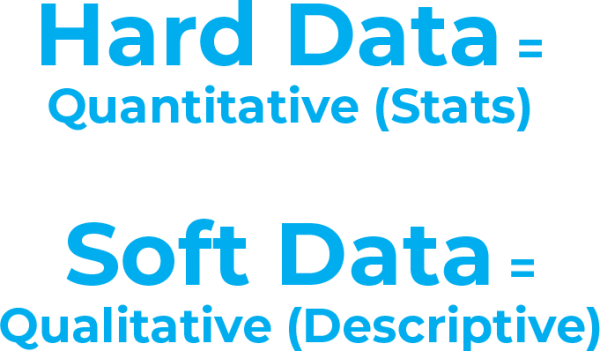
On the other hand, soft data (or qualitative data) is descriptive, intangible, and hard to measure. It also goes much deeper than hard data. Soft data is often gathered from interviews, observations, or from spending time with people. While hard data tells me that 60% of my customer base is female, soft data focuses on just a few of my female customers in an effort to understand:
- How do they use technology throughout the day?
- What are their perceptions of my brand?
- Who do they trust most for product recommendations?
If hard data tells me that one of my blog posts is driving 40% of my web traffic, soft data tells me why that blog is effective.
Nail your value proposition
Traditionally, multifamily marketing and advertising have been a hard-data world. Recently, however, there’s increasing awareness of the value of soft data. Without soft data insights, we will never really know our customers or our target audience. We will never know what is important to them, what they do on the weekends, or what keeps them up at night. Why do these things matter?
Because without these soft data insights, we do not truly know our value proposition. We do not know what problems we are trying to solve for our target audience. We do not know the best way to appeal or intercept them — what kind of technology, what message?
Cue your resident buyer personas …
In the section above, we talked about brand advocacy — that is, when customers voluntarily and excitedly recommend your brand to others (AKA the multifamily marketing mecca). To get there, you have to know what makes your customers tick.
One way to do this is through resident buyer personas. A persona is a semi-fictional character you create that epitomizes your customer. It captures their demographics, behaviors, and motivations. Not only does it summarize your target market, but it gives you “someone” tangible to market to. A resident buyer persona starts with hard data, then adds the soft data insights.

Role Play: Luxury Apartment
Let’s pretend you are the multifamily marketing coordinator for a luxury apartment complex in Uptown Dallas. You are trying to determine how to attract more young professionals, so you hold a small focus group with a few of your current residents. You ask them questions that aim to understand the “why.” Why did they choose this apartment? Why did they renew their lease? What’s the value of living here for them?
You then emerge with a few character profiles that read something like this …

Chris is 28 years old, single, and living in a one-bedroom apartment in Uptown Dallas. He’s originally from Chicago, but he stayed in Dallas after college for a job opportunity.
By day, he’s a financial analyst; however, every evening, you can find him at the CrossFit gym. He enjoys the camaraderie of CrossFit, and he frequents The Pickled Sub, a sandwich shop two blocks east. He always knew he wanted to live in Uptown, where he can walk to nearby grocery stores and restaurants.
His life revolves around Champ, his active three-year-old dog, who he likes to take out for runs. At his current location, the Katy Trail is 100 yards out the back door and the dog groomer is two blocks north. His dog sheds, yet he’s found these hardwood floors easier to keep clean than the carpet in his previous apartment. He’s gotten to know fellow pet owners throughout the apartment complex, with whom he enjoys the small talk that surrounds pet-owner responsibilities.
BOOM. You just got the angle for your new multifamily marketing materials. Remember that Chris does not actually exist. This persona was created from several conversations with residents. Hard data found that 34% of the residents were single, male, pet owners. Soft data revealed why they live there, and how you can continue to attract them. A persona gives you someone tangible to market to.
It’s teamwork, you see, between hard and soft data, big and small, quantitative and qualitative. We will see a lot more data collaboration this year. Why? Because it produces killer insights.
Want to learn more about the importance of building your buyer persona, including free resources like checklists, guides, quizzes, and more to help you do so? Check out our list of free buyer persona resources to help you get started!
3. Multifamily Inbound Marketing
This term, inbound multifamily marketing, has become more prevalent in the last year or so. Inbound multifamily marketing methods focus on content creation (e.g., blogging) as a way to attract your target audience and establish yourself as a resource within your industry or community. In turn, regular blogging serves to boost your multifamily SEO and drive media interest. It also provides points of engagement on social media.
Inbound multifamily marketing is a pull method rather than the push method of traditional apartment advertising. The prevalence of inbound multifamily marketing has necessarily given rise to a new trend: ongoing content creation.

New kids on the block
No longer is blogging merely a novelty multifamily marketing tactic. Instead, blogging has become essential to businesses in the digital age. (Just ask us how our last few clients found us!)
As the journalistic landscape evolves, we will see traditional writers and editors start to fill demand on the creative side. Businesses need more than just “a writer” these days. They need an editorial vision. They need someone who knows how to tell a multifamily brand story and then translate that story to several platforms. Journalism provides an excellent skill set for storytelling. This is why we’ll start to see content creation within agencies and businesses become more of a journalistic process.

By the end of 2021, we would not be surprised to see multifamily companies running their own little newsrooms! Lord knows that multifamily marketing agencies already are!
4. Context-Aware Advertising
Location, location, location. You have heard it before, but how will it drive digital multifamily marketing in 2021 and beyond? You’re about to find out.
Context awareness will be a major apartment advertising trend to keep an eye on this year. As the name suggests, context-aware apartment advertising takes into account your location (along with other publicized information) to serve you ads that are hyper-relevant and thus, more likely to convert.
Imagine all the applications … Consumers can receive coupons (e.g., half-price frozen yogurt, $10 off shoes) as they enter the vicinity of a store. Even small businesses inherit the power to be relevant and connect with consumers at the most actionable time (i.e., when they are standing outside of the store).
Consider beacons that stores sometimes use, and this scenario — already pretty realistic — becomes all the more possible:

Predictably, there are several privacy debates currently surrounding location-based advertisements, which require consumers to somehow “opt-in” to location-based ads or make their location public. Oftentimes, however, consumers may not be aware that they have “opted in.” Other privacy concerns include the ease of “opting out,” which the Digital Advertising Alliance (DAA) is currently sorting out.
From a multifamily marketer’s perspective, the technology is exciting. Now how to make context-aware apartment advertising work for you?
The key to effective ads (redefine context)
To deliver effective context-aware ads, you do not necessarily need access to personal information. Instead, think broadly.
Context-aware apartment advertising can also pull from other dynamic feeds, such as weather, stock prices, or breaking news. For example, if I own a local ice cream shop, my ads would probably be best served on sunny days when the weather is 80+ degrees. A student housing apartment complex is best promoted in July and August as the new semester begins. So on and so forth.
Think about what makes your product relevant to your customers, then capitalize on the context.
Ultimately, to stay on the pulse of digital multifamily marketing trends, you must first know who your target audience is and make them the center of your multifamily marketing and apartment advertising efforts.

The internet has officially changed how potential residents begin searching for a new place to call home. As consumers, we all buy products and make big decisions in a way some never thought was possible. Online has become the front door of all purchase decisions. Blogging, social media, and multifamily marketing are now a must, not an if.

Criterion.B multifamily marketing agency has always been about “bringing the human element” back to the apartment marketing space. Now it’s time for property managers and marketers, to build a foundation that embodies this approach — one that humanizes properties in the eyes of its residents, both present and future.
How Your Property Can Stand Out in a Cluttered Market
What are the most general and universal pain points of multifamily marketing?
Differentiating your property from the rest can be challenging, especially in a rather cluttered market. In a new digital environment, the implications for multifamily marketing are huge.
How your property is perceived is determined by several touchpoints: ease of multifamily website navigation, online reviews, responsiveness, tone, and personality conveyed through social media.
What’s the number one way to differentiate yourself online? Customer service. No, we’re not talking about mediating a resident’s maintenance complaint (although that certainly falls under this much larger umbrella). We’re talking about “customer service” as a proactive approach to leasing and community engagement.
Here are six things to consider as you change the way you promote your properties to differentiate yourself in the market:
1. Inbound multifamily marketing is here and quite frankly, it’s the future.
The digital advertising world has changed, and inbound multifamily marketing is a shift in the way business is being done.
2. Residents are more connected and opinionated than ever before.
Potential residents are coming to us more informed, more connected, and more opinionated than ever before. That means our multifamily marketing tactics and methodology needs to change too.
3. Multifamily marketing should never be an interruption.
We are done with interrupting the lives of potential residents and shouting the loudest in an effort to have advertising messages heard … it’s rude! We get it. We are all human beings who want relevant content delivered when we want it, on our terms. Meet your prospective residents where they already are and serve them informative, relevant content on their terms.

4. People matter. They’re not just another statistic in a database.
Potential residents should never be considered an entry in a database or a contact in a CRM (Customer Relationship Manager). Multifamily marketing messaging is meant to connect and provide powerful content that is useful and relevant to their problems. All the while, it’s helping transform your properties through real and honest data.
What renters perceive is a reality to them, so it is important to ensure your residents feel comfortable and welcome at your property. This requires properties to anticipate the needs of community members, and the best way to do that is to get to know them.
5. Service and resident experience outweigh material amenities.
Amenities are not the point of differentiation in today’s saturated market; amenities have become a necessity. Properties must take a customer service approach permeating every aspect of their operation: prospecting renters, leasing, community engagement, and planning resident events.
6. Trust is key in building the tools for a sustainable future.
Earning trust is important, every step of the way. Trust is essential for building relationships, which are the essence of inbound multifamily marketing. By building relationships with your residents, you’re building a sustainable future.
Instead of spending budgets heavily on the traditional multifamily marketing tactics of trade shows, print campaigns, direct mail, and cold calling, we need to shift rapidly towards a medium that allows for an inbound approach to targeting, interacting, and influencing consumers‘ decisions. After all, content is king.
The multifamily marketing world has changed. It is time to embrace the future.
A Digital Multifamily Marketing Foundation
Here’s the key takeaway: When you know what’s important to your residents, you can serve them better than anyone else. Whether we’re talking about web design, social media, online advertising, or meeting millennial expectations, this internalized customer-centric approach will be the common thread.
The shift towards becoming a truly customer-centric organization is both complex and long. However, even the smallest changes can have a significant benefit on your property management team, as well as your residents.
Being a customer-centric property is the Holy Grail towards unlocking the true potential of resident value. Always put yourself in the shoes of potential and current residents, and soon, your property will stand out from the rest.

How to Utilize Multifamily Content Marketing to Generate Traffic
The term multifamily inbound marketing is not a new method, but it is a method that still confuses many businesses.
Multifamily inbound marketing methods focus on content creation (e.g., blogging) as a way to attract your target audience and establish your business as a resource within your industry. In turn, regular blogging serves to boost search engine rankings, drive media interest, and provides points of engagement on social media.

Inbound multifamily marketing is a pull method, rather than the push method of traditional advertising, and it all comes down to one very important strategy: ongoing content creation.
When we talk about content, we are simply talking about information. In this case, content is any form of online information that you provide: blog posts, infographics, photo galleries, interactive maps, social media messages, aggregated articles, etc. The most important thing about content is that when it is done right, it does not focus on you; it focuses on your customers.
1. Start a Consistent Blogging Strategy
Great content delivers to your resident buyer persona the exact information they need, when and where they need it. One of the best ways to accomplish this is with a blog. Let’s take a look at a few important statistics:
- Websites with a blog often have 434% more indexed pages.
- B2B marketers with blogs receive 67% more leads than those who do not.
- Marketers who blog regularly are 13 times more likely to achieve a positive ROI.
- Blogs are rated the fifth most trusted source for accurate online information.
While 53% of marketers claim blogging is their top priority when it comes to content marketing, that also means 47% likely do not consistently blog. Considering the bullet points listed above, this 47% is missing out on a significant opportunity.
2. Tell Your Multifamily Brand Story
Blogging is no longer a novelty marketing tactic. Rather, blogging has become essential to businesses in the digital age. As the journalistic landscape continues to evolve, more and more traditional writers and editors are filling demand on the creative side.
Businesses need more than just “a writer;” they need an editorial vision. They need someone who knows how to tell a multifamily brand story and then translate that story to several platforms. Journalism provides an excellent skill set for storytelling, which is why content creation within agencies and businesses is now more of a journalistic process.

3. Create Content That Converts
To truly engage your audience, you need to know how to write a blog that speaks to them. Thinking in terms of inbound campaigns is a great way to optimize your multifamily digital marketing content to maximize conversion.
When forming a campaign, you should focus either on a single resident buyer persona and pain point, or two personas who may share a pain point. Understanding the persona you are targeting, the issue you are seeking to solve, and the goals of the campaign are all important to lead generation.
Another factor in campaigns is considering the buyer’s journey. Always write content for each stage of the journey, rather than just focusing on sales. Focus on these three stages: Awareness (recognizing a problem or need), Consideration (discovering solutions to the problem or need), and Decision (choosing the solution for the problem or need) is key to building a cache of content that can speak to your persona across different levels and convert appropriately.
4. Adopt a Persona-Driven Strategy
While it can be tempting for any business to want to present the maximum information that speaks to their services and reflects the positive aspects of their business, the best methodology is to hold off. Content is the core of how we are perceived online.
Creating content that converts is the key to apartment lead generation. By following a persona-driven content strategy, those leads can become a reality.

If you want more qualified leads, your work is cut out for you.
Gone are the days of traditional inbound marketing methods because the buyer’s funnel is no more. In its place is the flywheel, which focuses more on customer service and retention than on closing the next deal.

What does this mean for your business? Simply put: out with the old and in with the new. Savvy marketers will use inbound marketing methodology to attract and convert visitors, as well as monitor and support every aspect of the consumer’s sales cycle with the guidance of the flywheel.
What Is the Flywheel?
Grasping the attention of your customers has become a tough business. The solution is inbound marketing, where you earn the attention of prospective buyers by creating compelling content, nurturing them through the buyer’s journey, and delighting them with superior customer service.
However, the new buyer’s journey no longer starts at the top and flows down a funnel to the finish; rather it’s a continual cycle that progresses through stages.
The flywheel, introduced by HubSpot earlier this year, features a cyclical, continual journey, the way the buyer’s journey should actually be. This new way of thinking offers a system for scalable, repeatable revenue generation. In essence, the faster the flywheel spins, the more revenue you will generate.
More importantly, the flywheel places customers at the center with marketing, sales, and service revolving around them. With customers at the center of the process, rather than at the bottom of a funnel, this challenges marketers to focus on harnessing the power of word-of-mouth marketing and retaining customers.

The key to adopting the flywheel framework is to identify points of friction your customers face when scaling their business and help those customers reduce that friction through reorganization, shared goals, and automation.
Forget the Funnel. Embrace the Flywheel.
Today’s consumers are tech-savvy and more educated than ever about their purchasing decisions, so the buyer’s journey is no longer linear. Buyers often flip back and forth on their purchasing decision, entering or exiting different stages of the buyer’s journey as they check online reviews, do their own research, and evaluate vendors.
According to HubSpot, 55% of consumers don’t trust companies they purchase from as much as they used to, 65% don’t trust press releases, 65% don’t trust advertisements, and 71% don’t trust social media ads.
As trust in business continues to erode, it’s more important now than ever for businesses to adopt the flywheel methodology to support their customers better. Continual support and superior customer service will better the odds that those customers will offer a good review, refer the company or product to their friends, and remain loyal.


